Guest blogger: Debbie Terranova - QANZAC100 Fellow.
Among State Library of Queensland's collections are four dainty cloth-covered diaries. The War Diaries of Joan Peeters (nee Taylor) cover the period from 1941 to 1944.
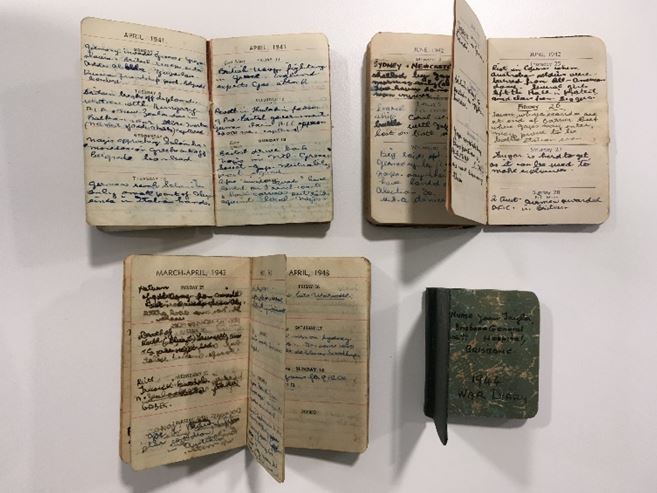
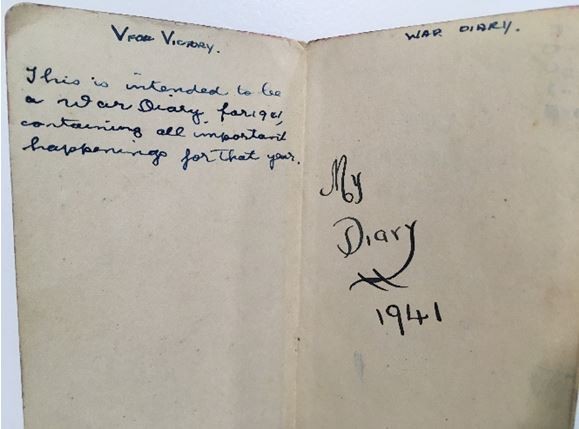
Inside cover of the 1941 War Diary of Joan Peeters (nee Taylor). State Library of Queensland collection. Image: Debbie Terranova
Barely a pen stroke is written about her personal life. Not even her age is revealed. However, we can deduce that in 1941 she resided with her parents in the Brisbane suburb of Annerley. By January 1943 she had moved into the nurses’ quarters at the Brisbane General Hospital.
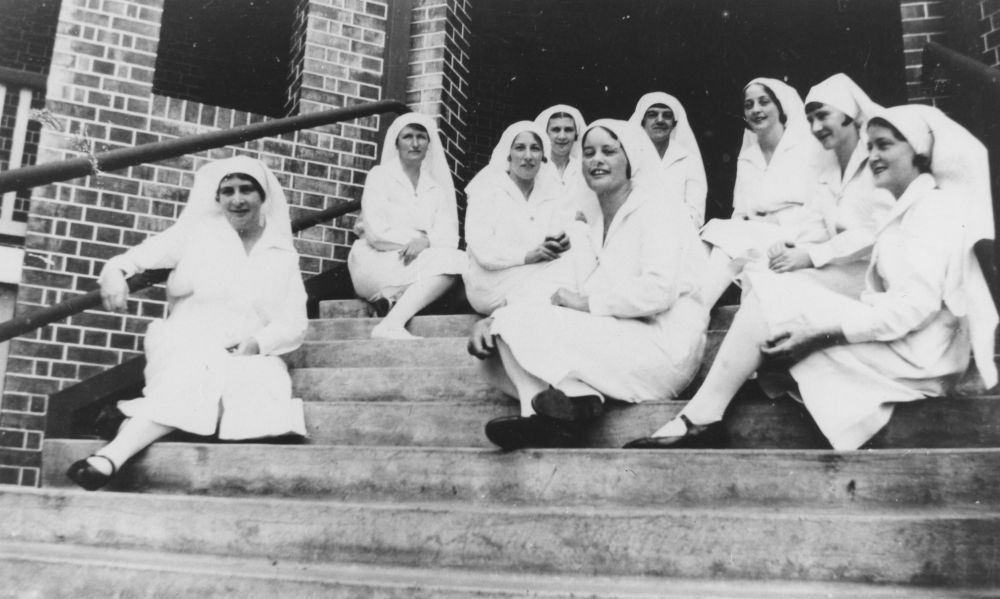
Nursing sisters at the Brisbane General Hospital, Queensland, December 1935. John Oxley Library, State Library of Queensland. Neg 151363
True to her word, every day is filled with headlines about the war, filtered through the eyes of a young woman. As well as invasions, military manoeuvres, battles, casualties, there are personal observations, remarks, and explanatory notes.
In March 1941, we learn that an American fleet has arrived in Brisbane to a “great welcome”. In April, “10,000 were killed in the Belgrade massacre”. In June, Germany declares war on Russia and Mr Churchill says “we will help Russia all we can”.
On 2 November 1941, “Even clothes are rationed in England now. Stockings can’t be bought so they use “liquid hosiery”, which is popular even over here.”
The entry for 5 November 1941 hints at the Holocaust to come. “Jews killed by thousands in Roumania.”
On 8 December 1941, Joan records “At 3.30 this morning, Jap planes bombed Hawaii and Manilla (Philippine Islands) killing 135. Japan declared war on U.S. and Britain.”
As the war in the Pacific ramps up, Australia’s very shores become threatened. In January 1942, she records “thousands of U.S. soldiers are arriving here”. In February there is a “big enemy alien round-up in Qld”, “SINGAPORE the invincible has surrendered”, and “Japs bomb DARWIN!”.
Some items are prefaced with a note, “not in newspapers” or “private information”, and reveal incidents that might not have passed wartime censorship in Queensland. Information might have come to her through word of mouth … and may, or may not, have been true.
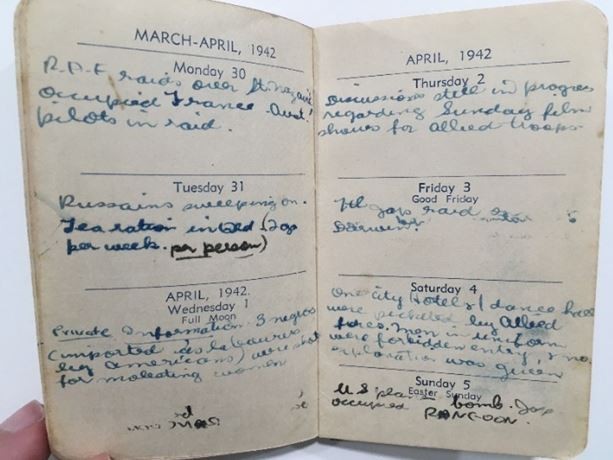
Diary entries for 30 March - 5 April 1941. State Library of Queensland collection. Image: Debbie Terranova
On 15 April 1942, “private information” reveals that “Two black soldiers were shot, one at Nasco House1, the other at the Grand Central Hotel for attacking women.”
In July she writes, “Despite official report of no casualties in Townsville raid, witnesses say many killed”.
On 16 August another shocking incident of violence is recorded. “Allied soldier shot and seriously wounded girl at Lyceum Theatre, then killed himself.2”
Later in 1942 there is “air raid practice”, a “surprise blackout”, the introduction of sugar rationing (“1lb to each person per week”), a decision to employ “100 women tram conductresses”, and “more people stabbed in Brisbane in quarrels”.
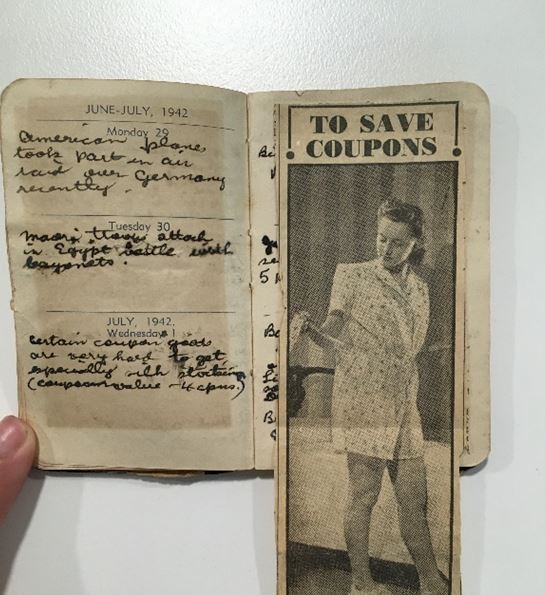
Wartime austerity: tips on how to save coupons. Newspaper clipping in the 1942 diary. Origin unknown. Image: Debbie Terranova
On 31 December, Joan writes that “Australian women, released from German concentration camps, tell their story”. She concludes the year with a note about the battle of Buna in New Guinea. “Many crosses line the way but our men have not died in vain.”
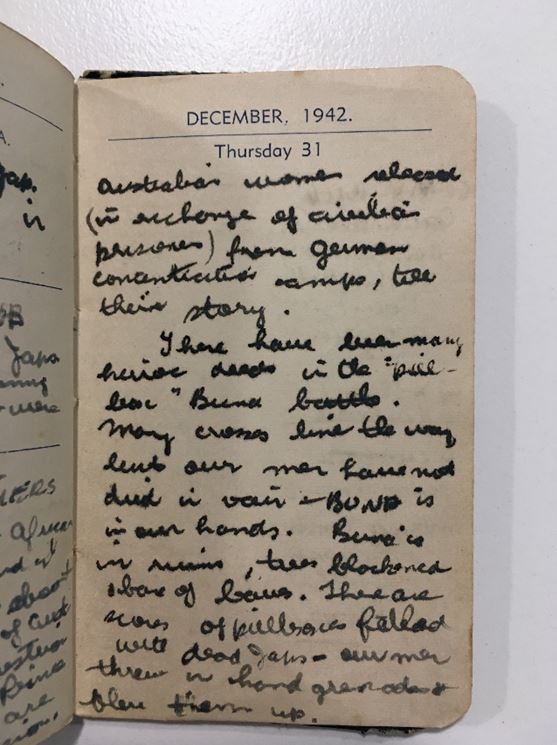
Patriotism abounds. Entry for 31 Dec 1942. Image: Debbie Terranova
In 1943, the war brings new challenges to Australian shores. In March, “Japs raid Darwin. Two Jap transports sunk off N. Aust. coast” and “Enemy plane sighted over Kembla near Sydney. Fired on by Allies”. In May, “238 typhoid cases reported in Melbourne” and the hospital ship Centaur is sunk by Japanese 40 miles east of Brisbane. The survivors are brought quietly to the Ear, Nose and Throat (ENT) ward, next to where Joan works. “Quietly so as not to cause panic3”.
Later that year, there are “more cases of Scarlet Fever in Brisbane”. On voting day, Mr Curtin is “returned with a great majority”, the “Italian armistice was signed” (3 September), and there is an “extreme shortage of meat” with “hundreds turned away from butchers daily”.
The 1944 diary begins with the (inaccurate) report of the death of Mussolini. “He is supposed to have died in a German clinic from stomach ulcers”4. Also in January there is “terrific raid damage in every part of Berlin”, followed three weeks later by “Luftwaffe makes determined attack against London. Many casualties, big damage”. On 7 June, Joan writes, “D-DAY! Pouring into France from greatest Armada assembled in history. Allied forces establish beach heads, make swift advances”.
The tide of the war, it seems, has turned. So too has Joan’s diligence in recording events. Perhaps this is indicative of her workload as a nurse, or she has personal matters to deal with, or perhaps she is weary of a war without an end. Whatever the reason, weeks go by without a word, followed by ever more abbreviated entries.
In July, she writes “removal of coastal blackout announced” and “Attempt to assassinate Hitler by bomb fails. Members of his staff arrested - some shot”. On 31 August, “PARIS is free!”. In October, “Archibald Prize award contested in court5”. In November, “Roosevelt wins fourth term as U.S. President” and “Tokyo blazes after Super Fortress strike”.
Joan’s final entry, on 31 December 1944, suggests perhaps a little cynicism. “Sniper’s bullet just misses Churchill in Athens. Hitler’s speech - ‘Germany will not lose the war’ (oh yeah!)”.
Debbie Terranova has a QANZAC 100 Fellowship for 2018-19. Her research into the many and varied experiences of female civilians during the Second World War continues. More blog posts about Queensland women and war will be coming soon.
1 Nasco House, located near All Saints Church in Ann St Brisbane, was a welfare centre for members of the fighting services, providing meals and entertainment. According to The Courier-Mail on 23 April 1941, a petition to the City Council alleged that Nasco House was “an intolerable nuisance”, that “drunken brawls had occurred frequently in the street … and almost every night beer bottles were thrown from the upper windows.”
2 This incident of unrequited love and jealousy was reported in several Queensland newspapers. It involved a U.S. serviceman and an attractive theatre usherette who had refused his persistent advances. On 23 August, the Truth ran a feature article on page 14, calling for “an open enquiry into the whole circumstances of the shooting”. Source: www.trove.nla.gov.au.
3 Joan Peeters Taylor. “Nursing During the War Years, 1943-1945”. Unpublished memoir, 1996. OM Box 14302, SLQ
4 Mussolini’s actual death on 28 April 1945 was far more brutal. He, his mistress, and his former Propaganda Minister were executed by Italian partisans. In the presence of a jeering crowd, their bodies were strung up by the ankles and left dangling, head-down, in the Piazzale Loreto in Milan. It was reported that Mussolini’s headless body was later buried in an unmarked grave. Source: Newcastle Morning Herald and Miners’ Advocate, 3 May 1945, p3. Accessed on www.trove.nla.gov.au.
5 William Dobell’s portrait of artist Joshua Smith was accused of being a caricature, not a portrait.
Comments
Your email address will not be published.
We welcome relevant, respectful comments.